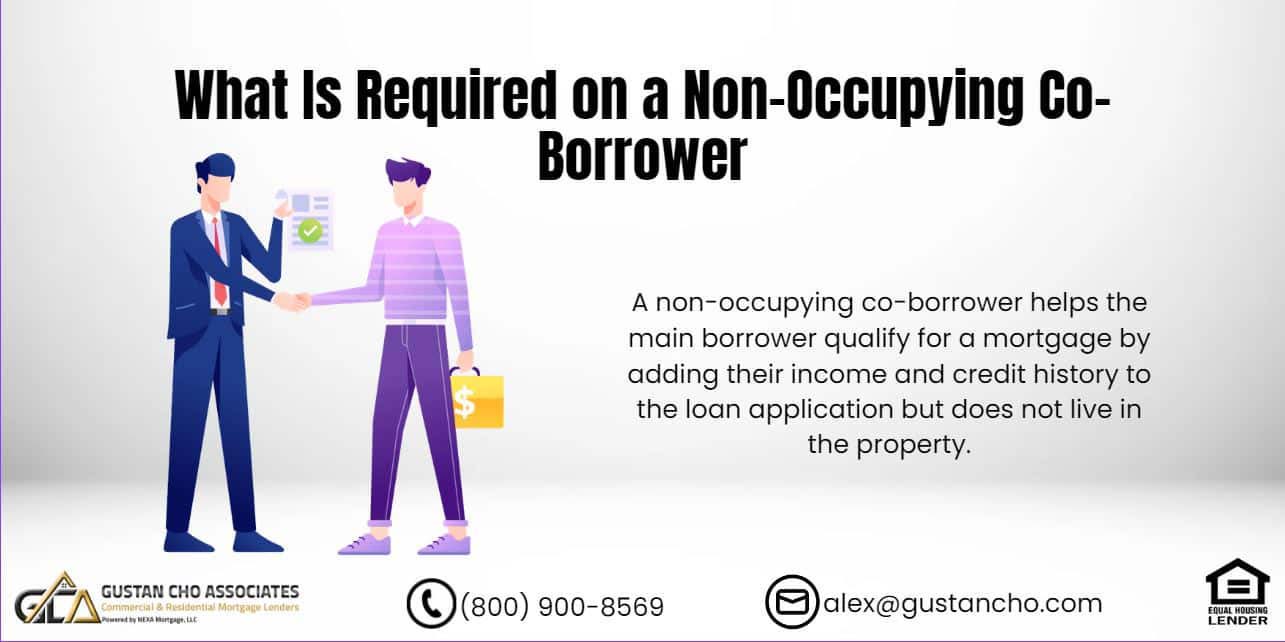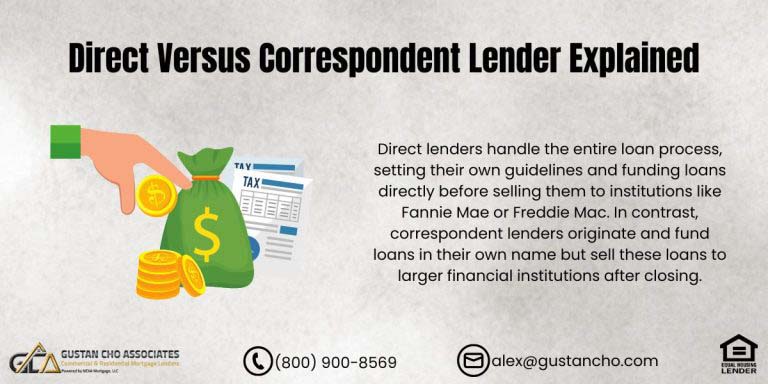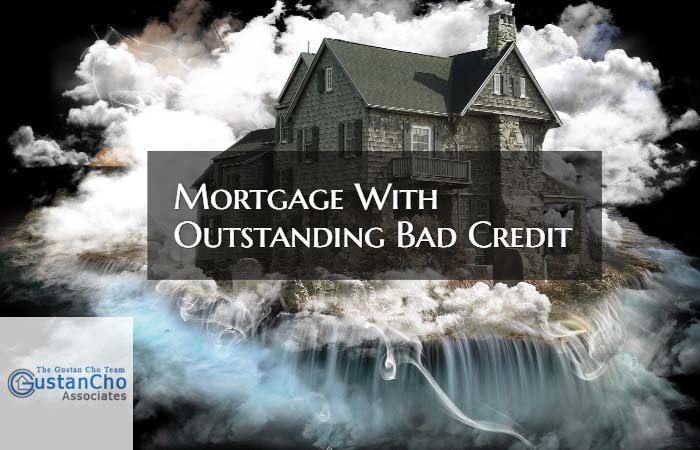When it comes to getting home loans, buyers sometimes need extra support to qualify for their dream home. This is exactly when bringing in a non-occupying co-borrower can make a huge difference. If you’re stepping into the housing market for the first time, or even if you’re well-versed in real estate dealings, it’s crucial to fully grasp what is required on a non-occupying co-borrower.
This easy-to-understand guide dives into all the essential information you need. Knowing what is required on a non-occupying co-borrower isn’t just helpful; it’s a game-changer for making your home-buying journey smoother.
Understanding the Role of a Non-Occupying Co-Borrower
Knowing what is required on a non-occupying co-borrower can make a big difference in getting approved for a mortgage. A non-occupying co-borrower is someone who agrees to be part of a mortgage loan to assist the main person in buying or refinancing the home. Unlike the main buyer, this person doesn’t live in the house. They could be a relative or a close friend.
Their job? To help the primary applicant look more appealing to lenders. Why? Because the non-occupying co-borrower’s income and credit information are added to the mix, making the loan application stronger.
When thinking about what is required on a non-occupying co-borrower, it’s important to know that this role isn’t just a title. It means they’re just as responsible for the loan as the person living in the house. Lenders look at their income and how they’ve managed their finances to decide if you all make a solid team for a mortgage together. This could be beneficial for individuals who may not meet the requirements independently because of income or credit challenges.
Need a boost in qualifying for a mortgage?
A non-occupying co-borrower can help! Apply now to explore your options.Eligibility Criteria for a Non-Occupying Co-Borrower
What does it take to be considered a non-occupying co-borrower? Primarily, it’s essential to understand that what is required on a non-occupying co-borrower is similar to what’s expected of the main borrower. This means they need a stable income that meets the necessary qualifications and a credit score that hits the minimum mark.
Additionally, there’s the matter of waiting periods that come into play following significant financial setbacks — think along the lines of bankruptcy, losing a home to foreclosure, a deed-in-lieu of foreclosure, or even a short sale. Each event requires a certain amount of time before the non-occupying co-borrower can be eligible again.
So, when asking what is required on a non-occupying co-borrower, remember, it’s about matching the primary borrower’s eligibility in terms of income and credit, plus navigating through the waiting periods mandated after major financial incidents.
Documentation and Financial Requirements
It’s all about the paperwork when looking into what is necessary for a non-occupying co-borrower. Banks or lenders will ask for a bunch of documents to check if the co-borrower can help out with the loan. They want to see things like:
- Proof of income – our pay stubs, tax returns, and any other proof that you’re making money.
- Employment Verification – A confirmation from your workplace that you indeed work there.
- Bank Statements – Bank statements to see how you manage your money.
- Credit Report – to determine how well you’ve handled loans or credit in the past.
These papers are super important for lenders because they paint a picture of whether the person helping you with the loan is financially solid. So, when you’re wondering about what is required on a non-occupying co-borrower, remember it’s mainly about showing through these documents that they’re in a good spot money-wise to back up the main borrower in paying back the loan.
Credit Score and Income Requirements
When applying for a loan, the credit scores of non-occupying co-borrowers significantly influence the requirements. For FHA loans, both the borrower and the non-occupying co-borrower must have a minimum credit score 580 to qualify for a 3.5% down payment loan. Conventional loans have different requirements.
Regarding income, lenders look at the non-occupying co-borrower’s debt-to-income (DTI) ratio. Ideally, the non-occupying co-borrower should have a low DTI ratio to avoid negatively impacting the loan application. Qualified income includes regular wages, social security, pensions, and long-term disability payments. Part-time, bonus, and overtime income can be considered if there’s a two-year history and it’s likely to continue for at least three more years.
Impact on the Primary Borrower’s Loan Application
When you’re trying to get a loan and decide to include someone else on your application who won’t live in the house, it can greatly impact whether you get approved. This person is what is required on a non-occupying co-borrower. Bringing them on board helps your chances, especially if you’re having a hard time showing enough income or a strong credit history.
But there’s something important about how lenders decide if you qualify. They look at your credit scores and the co-borrower’s, specifically the second-highest score from each of you. If your co-borrower’s credit could be better, the score they use to judge if you qualify might be lower.
Adding a co-borrower who doesn’t live with you can be a big help, but it also depends on their financial health. Remember, what is required on a non-occupying co-borrower is crucial because their credit score could influence the outcome of your loan application.
Specific Lender or Loan Program Guidelines
Different home loan options come with their own rules, especially when discussing what is required on a non-occupying co-borrower. Take, for example, the FHA loans. If you’re applying for this type of loan and you have a non-occupying co-borrower who’s part of your family, they can help you qualify for the loan without needing to put down a lot of money upfront. On the flip side, if this co-borrower isn’t family, then the FHA demands a 25% down payment—it’s quite a big leap.
Things get a bit friendlier when we shift our gaze to conventional loans, the ones you might hear about from Fannie Mae or Freddie Mac. What is required on a non-occupying co-borrower is less strict in these scenarios. They don’t have to be your relative, which is a plus. And the cherry on top? Your down payment could be as low as 3% to 5%. It’s a relief, especially for borrowers who are gathering every penny to buy their dream home without a hefty down payment.
Differences in Requirements Between Loan Types
When we talk about what is required on a non-occupying co-borrower for different home loans, each has its own rules.
FHA Loans
To qualify for an FHA Loan with a co-signer who will not live with you, they must be related to you by blood, marriage, or legal documentation if you make a 3.5% down payment. If they are unrelated, you must make a 25% down payment. Both you and your co-signer must have a credit score of at least 580.
Conventional Loans
In Conventional Loans, it doesn’t matter if the person co-signing is related to you. The down payment is usually between 3% and 5%, and the credit scores required are generally higher than for FHA loans.
VA Loans
What is required on a non-occupying co-borrower is quite specific for VA Loans because only spouses can co-sign, and they don’t allow co-signers who won’t live in the house.
USDA Loans
USDA Loans are also strict, as they do not allow co-signers who won’t be living with you at all.
So, when considering what is required on a non-occupying co-borrower, it’s crucial to understand these differences to make the best choice for your home loan.
Struggling to qualify on your own?
A co-borrower can help you secure a mortgage! See if you qualify today.How Are Credit Scores Used On Borrowers And Non-Occupant Co-Borrowers?
Mortgage lenders use the middle of the three credit scores of the borrower or non-occupant co-borrower. If non-occupant co-borrowers are added to the mortgage loan, then the lower of the two middle scores of the two or more borrowers will be used as the qualifying credit score. Let us take an example where a borrower and co-borrower have the following credit scores:
Person Experian Equifax TransUnion Middle Credit Score
Borrower 600 700 800 700
Co-Borrower 500 600 700 600
Lenders will use the middle of the two borrowers’ credit scores when the co-borrower has the lower credit score in the above case scenario. The middle credit score of 600 FICO Credit Score will be used as the credit score for this mortgage loan application.
Non-Occupying Co-Borrower Income
When applying for a mortgage, understanding what is required on a non-occupying co-borrower is essential. A key aspect of this is income qualification. The non-occupying co-borrower must have a reliable and ample income. Let’s talk about the types of income that can make the cut:
- Earnings from a full-time job
- Social Security benefits
- Pension money
- Disability payments
Additionally, for income such as part-time jobs, bonuses, and overtime pay to be considered, there’s a need for a consistent history over at least two years, and it should look like it will keep coming.
So, when talking about what is required on a non-occupying co-borrower, ensure they have a steady and sufficient income from acceptable sources, such as being employed full-time, receiving Social Security, getting pension funds, or disability payments.
Remember, more occasional income sources like part-time work, bonuses, and overtime can only be counted if they’ve been consistent for a couple of years and are expected to continue. This understanding ensures everyone’s on the same page and sets the stage for a smoother mortgage application process.
Waiting Periods After Financial Hardships
When life throws a curveball and you face financial hardships, it’s crucial to know what comes next, especially if you’re a non-occupying co-borrower on a mortgage. This is someone who co-signs the loan but doesn’t live on the property. Understanding what is required on a non-occupying co-borrower after such events can help you plan your next steps.
Here’s a breakdown using simpler words, focusing on what is required on a non-occupying co-borrower after tough financial times:
Chapter 7 Bankruptcy
If someone has gone through a Chapter 7 Bankruptcy, they must wait before jumping back into the housing market. There’s a two-year wait for those interested in getting an FHA loan. And if looking at conventional loans, the wait extends to four years.
Chapter 13 Bankruptcy
Chapter 13 Bankruptcy is a bit different. A non-occupying co-borrower who’s faced this scenario is required to wait no time for FHA loans once the bankruptcy discharge is in place. However, they’d have to wait two years after discharge if they’re leaning towards a conventional loan.
Foreclosure
Foreclosure is when the home is taken because the loan wasn’t paid. After this, what is required on a non-occupying co-borrower looking at FHA loans is a waiting period of three years. For those considering conventional loans, the wait is quite a bit longer, at seven years.
Struggling to make mortgage payments?
Avoid foreclosure with a short sale or deed-in-lieu. Contact us now for solutions!Short Sales or Deed-in-Lieu if Foreclosure
Lastly, for Short Sales or Deeds-in-Lieu of Foreclosure, where you sell the home for less than it’s worth or hand it over to the bank to avoid foreclosure, the wait times are three years for FHA loans and four years for conventional loans.
This breakdown simplifies the waiting periods and terms you might hear, making it easier to understand what steps you or a co-borrower need to take next after facing financial challenges.
Grasping what is required on a non-occupying co-borrower is key for anyone hoping to strengthen their mortgage application. It involves understanding who can qualify, what paperwork you need, what each lender expects, and how your credit score fits into the picture. Each part is vital for getting the green light on your loan.
The main borrowers and the co-borrowers who do not occupy the property need to understand these requirements to navigate obtaining a home loan more effectively. This doesn’t just boost the odds of your loan being approved; it also leads to a smoother and more clued-up borrowing process.
Knowing what is required on a non-occupying co-borrower becomes crucial in making the journey towards owning a home less daunting. Understanding what is required on a non-occupying co-borrower is essential for anyone looking to strengthen a mortgage application. Each element, including eligibility criteria, documentation requirements, and specific lender guidelines and credit score considerations, is essential in determining the approval process.
By comprehending these requirements, both primary borrowers and non-occupying co-borrowers can better navigate the complexities of home loans. This not only improves the chances of loan approval but also ensures a smoother and more informed borrowing experience.
FAQs: What Is Required on a Non-Occupying Co-Borrower
-
1. What is a non-occupying co-borrower? A non-occupying co-borrower helps the main borrower qualify for a mortgage by adding their income and credit history to the loan application but does not live in the property.
-
2. Why would someone need a non-occupying co-borrower? If the main borrower doesn’t have enough income or has a low credit score to qualify for a mortgage, they will need a co-borrower who is not occupying the property.
-
3. What documents are needed from a non-occupying co-borrower? To demonstrate financial stability, you need to provide proof of income, such as pay stubs and tax returns, employment verification, bank statements, and a credit report.
-
4. What is required on a non-occupying co-borrower’s credit score? A minimum credit score of 580 is needed for FHA loans. However, different loans may have different credit score requirements.
-
5. How does the income of a non-occupying co-borrower affect the loan application? The non-occupying co-borrower’s income helps boost the overall income shown on the application, making it easier to qualify for the loan. Their debt-to-income ratio should ideally be low.
-
6. Are there specific waiting periods for non-occupying co-borrowers after financial hardships? Yes, for instance, after a Chapter 7 bankruptcy, there is a two-year wait for FHA loans and four years for conventional loans. Waiting periods vary for different financial events and loan types.
-
7. Can a non-occupying co-borrower be a friend, or must they be a family member? A non-occupying co-borrower usually must be a family member for FHA loans unless you make a 25% down payment. Conventional loans have more flexible guidelines and do not require the co-borrower to be a relative.
-
8. How does adding a non-occupying co-borrower impact the main borrower’s loan application? It can improve the chances of loan approval by enhancing the combined income and credit profile. However, lenders will use the lower of the two middle credit scores from both borrowers.
-
9. What types of income are considered for a non-occupying co-borrower? Regular wages, social security, pensions, and long-term disability payments are considered. Part-time, bonus, and overtime income can be included if there is a two-year history, and it is expected to continue.
-
10. What is required on a non-occupying co-borrower for different loan types? The minimum credit score required for FHA loans is 580. These loans may also require a family relationship. Conventional loans allow for lower down payments but have higher credit score requirements. VA and USDA loans have different or stricter rules for non-occupying co-borrowers.
If you have any questions about What Is Required on a Non-Occupying Co-Borrower, please contact us at 800-900-8569. Text us for a faster response. Or email us at alex@gustancho.com. The team at Gustan Cho Associates is available 7 days a week, on evenings, weekends, and holidays.
This blog about What Is Required on a Non-Occupying Co-Borrower was updated on July 15th, 2024.










